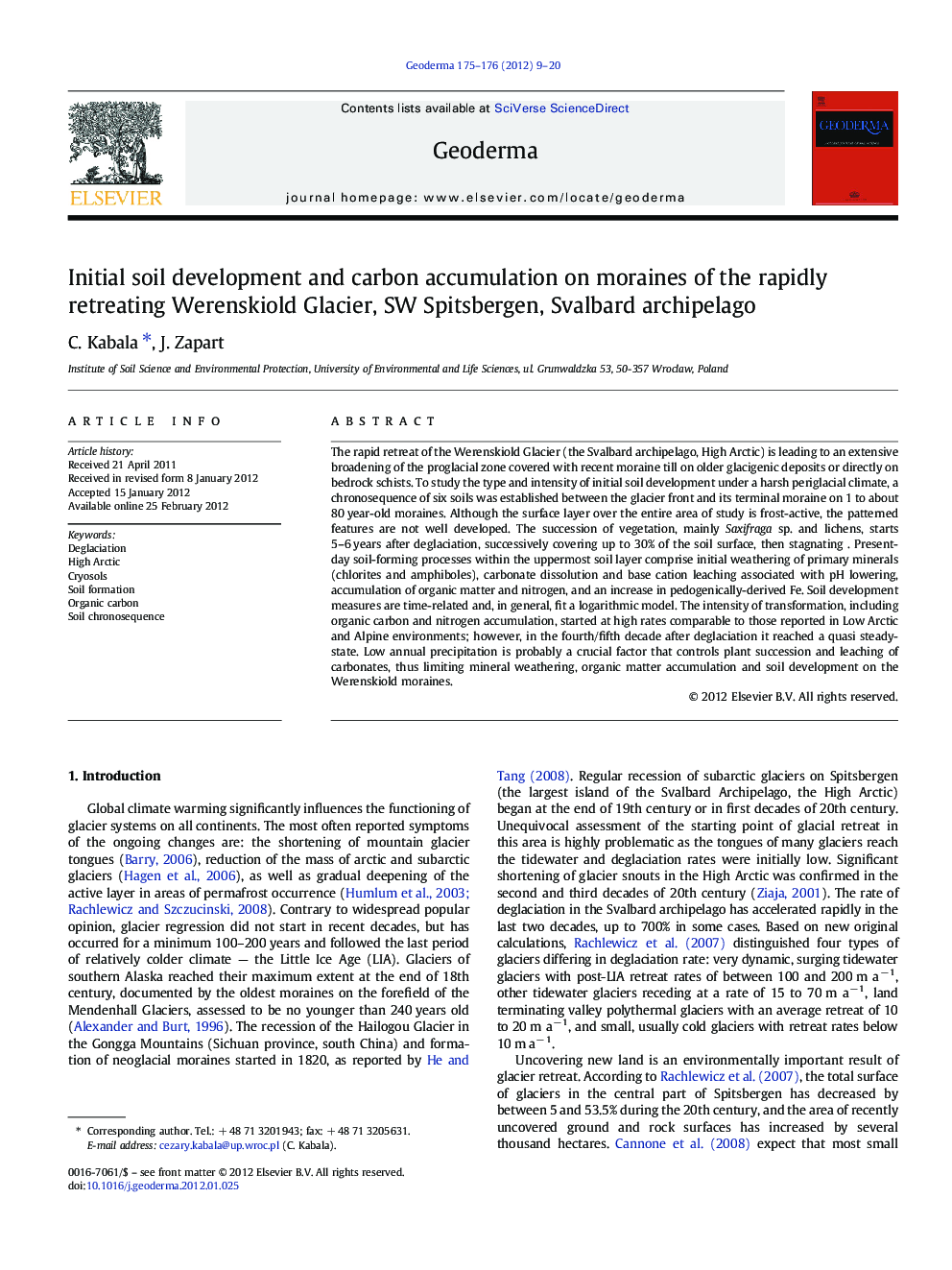| کد مقاله | کد نشریه | سال انتشار | مقاله انگلیسی | نسخه تمام متن |
|---|---|---|---|---|
| 4573969 | 1629500 | 2012 | 12 صفحه PDF | دانلود رایگان |

The rapid retreat of the Werenskiold Glacier (the Svalbard archipelago, High Arctic) is leading to an extensive broadening of the proglacial zone covered with recent moraine till on older glacigenic deposits or directly on bedrock schists. To study the type and intensity of initial soil development under a harsh periglacial climate, a chronosequence of six soils was established between the glacier front and its terminal moraine on 1 to about 80 year-old moraines. Although the surface layer over the entire area of study is frost-active, the patterned features are not well developed. The succession of vegetation, mainly Saxifraga sp. and lichens, starts 5–6 years after deglaciation, successively covering up to 30% of the soil surface, then stagnating . Present-day soil-forming processes within the uppermost soil layer comprise initial weathering of primary minerals (chlorites and amphiboles), carbonate dissolution and base cation leaching associated with pH lowering, accumulation of organic matter and nitrogen, and an increase in pedogenically-derived Fe. Soil development measures are time-related and, in general, fit a logarithmic model. The intensity of transformation, including organic carbon and nitrogen accumulation, started at high rates comparable to those reported in Low Arctic and Alpine environments; however, in the fourth/fifth decade after deglaciation it reached a quasi steady-state. Low annual precipitation is probably a crucial factor that controls plant succession and leaching of carbonates, thus limiting mineral weathering, organic matter accumulation and soil development on the Werenskiold moraines.
► Turbic Leptosols and Turbic Cryosols prevail in the proglacial zone.
► C and N accumulation is initially comparable with Alpine environments.
► Soil development fits a log model with a quasi steady-state after 4-5 decades.
► Low precipitation limits plant succession and soil development on the moraines.
Journal: Geoderma - Volumes 175–176, April 2012, Pages 9–20